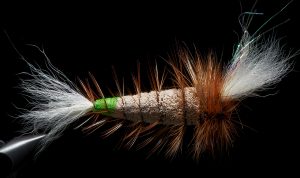
The first rule of fly fishing for steelhead and other types of salmon is to come armed with a lot of patience. Salmon species more than any other fish act according to their own schedule, especially in fresh water.
They won’t bite unless everything is perfect, including their mood. It is important to choose the right steelhead flies and other salmon flies when you are going out hoping for success, as the presentation and the type of fly will have just as much to do with your success as anything else.
Common knowledge states that once Pacific salmon, and this includes steelhead, enter freshwater, they quit eating and thus don’t rise to flies. This isn’t totally true, as the journey upstream for many of these salmon is incredibly long and some nutrition has to be gained.
What is closer to the truth is that everyone, from anglers to biologists, have trouble determining exactly what these fish will bite on. There are many schools of thought; some contend that salmon and steelhead won’t bite on flies patterned after actual prey, others that coho, chinook, and other species prefer specific fly patterns.
These theories are all rooted in facts drawn from the life cycle of the salmon. Species like chum and pink do not spend a lot of time in freshwater as they mature, therefore they are not used to terrestrial flies.
Steelhead, sockeye, coho, and chinook however spend a year or so growing in fresh water before going out to the ocean, and in that time they have to eat something. The thinking here is that steelhead flies and other salmon flies that imitate common prey trigger memories in the different species.
Still others contend that steelhead, chinook, sockeye, and coho are more likely to bite on flies both in the ocean and then in fresh water that are reminiscent of their natural ocean going prey. Anglers operating under this theory have had success on flies that look like prawns or shrimp; although these are not natural to fresh water, it may be that they are taken on instinct, a memory based on the days in the ocean.
Whatever the reason a salmon rises to a fly, the best way to have success seems to be to have a variety of flies at your disposal if you hope to have a good day fishing. The really infuriating thing about steelhead and other types of salmon is that they can be clearly seen in huge numbers while you are casting for them, and one can’t help but wonder why on earth they aren’t biting.
Steelhead flies and other salmon flies tend to have varying degrees of success based on the river in question, the species of fish, and the time of year. All of these factors lead to a conclusion supporting a variety of flies in an arsenal for a successful trip.
Check out all the dry flies product and dry fly assortments for all of your salmon and other fish species fishing tackle needs.
